Metabolism of 1-methyl-4-phenyl-1,2,3,6-tetrahydropyridine by mitochondrion-targeted cytochrome P450 2D6: implications in Parkinson disease
- PMID: 23258538
- PMCID: PMC3567693
- DOI: 10.1074/jbc.M112.402123
Metabolism of 1-methyl-4-phenyl-1,2,3,6-tetrahydropyridine by mitochondrion-targeted cytochrome P450 2D6: implications in Parkinson disease
Abstract
1-Methyl-4-phenyl-1,2,3,6-tetrahydropyridine (MPTP) is a neurotoxic side product formed in the chemical synthesis of desmethylprodine opioid analgesic, which induces Parkinson disease. Monoamine oxidase B, present in the mitochondrial outer membrane of glial cells, catalyzes the oxidation of MPTP to the toxic 1-methyl-4-phenylpyridinium ion (MPP(+)), which then targets the dopaminergic neurons causing neuronal death. Here, we demonstrate that mitochondrion-targeted human cytochrome P450 2D6 (CYP2D6), supported by mitochondrial adrenodoxin and adrenodoxin reductase, can efficiently catalyze the metabolism of MPTP to MPP(+), as shown with purified enzymes and also in cells expressing mitochondrial CYP2D6. Neuro-2A cells stably expressing predominantly mitochondrion-targeted CYP2D6 were more sensitive to MPTP-mediated mitochondrial respiratory dysfunction and complex I inhibition than cells expressing predominantly endoplasmic reticulum-targeted CYP2D6. Mitochondrial CYP2D6 expressing Neuro-2A cells produced higher levels of reactive oxygen species and showed abnormal mitochondrial structures. MPTP treatment also induced mitochondrial translocation of an autophagic marker, Parkin, and a mitochondrial fission marker, Drp1, in differentiated neurons expressing mitochondrial CYP2D6. MPTP-mediated toxicity in primary dopaminergic neurons was attenuated by CYP2D6 inhibitor, quinidine, and also partly by monoamine oxidase B inhibitors deprenyl and pargyline. These studies show for the first time that dopaminergic neurons expressing mitochondrial CYP2D6 are fully capable of activating the pro-neurotoxin MPTP and inducing neuronal damage, which is effectively prevented by the CYP2D6 inhibitor quinidine.
Figures
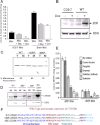
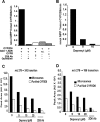
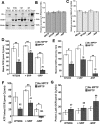
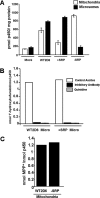
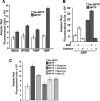
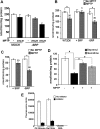
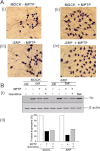
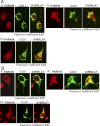
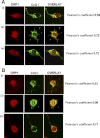
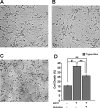
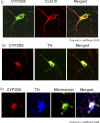
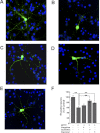

Similar articles
-
Mitochondrially targeted cytochrome P450 2D6 is involved in monomethylamine-induced neuronal damage in mouse models.J Biol Chem. 2019 Jun 28;294(26):10336-10348. doi: 10.1074/jbc.RA119.008848. Epub 2019 May 20. J Biol Chem. 2019. PMID: 31113867 Free PMC article.
-
Comparative aromatic hydroxylation and N-demethylation of MPTP neurotoxin and its analogs, N-methylated beta-carboline and isoquinoline alkaloids, by human cytochrome P450 2D6.Toxicol Appl Pharmacol. 2006 Nov 1;216(3):387-98. doi: 10.1016/j.taap.2006.06.003. Epub 2006 Jun 15. Toxicol Appl Pharmacol. 2006. PMID: 16870220
-
The Essential Role of Drp1 and Its Regulation by S-Nitrosylation of Parkin in Dopaminergic Neurodegeneration: Implications for Parkinson's Disease.Antioxid Redox Signal. 2016 Oct 10;25(11):609-622. doi: 10.1089/ars.2016.6634. Epub 2016 Aug 8. Antioxid Redox Signal. 2016. PMID: 27267045
-
Amphetamine-metabolites of deprenyl involved in protection against neurotoxicity induced by MPTP and 2'-methyl-MPTP.J Neural Transm Suppl. 1994;41:207-19. doi: 10.1007/978-3-7091-9324-2_27. J Neural Transm Suppl. 1994. PMID: 7931228 Review.
-
MPTP as a mitochondrial neurotoxic model of Parkinson's disease.J Bioenerg Biomembr. 2004 Aug;36(4):375-9. doi: 10.1023/B:JOBB.0000041771.66775.d5. J Bioenerg Biomembr. 2004. PMID: 15377875 Review.
Cited by
-
Further evidence for the association of CYP2D6*4 gene polymorphism with Parkinson's disease: a case control study.Genes Environ. 2017 Jul 1;39:18. doi: 10.1186/s41021-017-0078-8. eCollection 2017. Genes Environ. 2017. PMID: 28680508 Free PMC article.
-
Methodological Approaches to Experimental Evaluation of Neuroprotective Action of Potential Drugs.Int J Mol Sci. 2024 Sep 28;25(19):10475. doi: 10.3390/ijms251910475. Int J Mol Sci. 2024. PMID: 39408802 Free PMC article. Review.
-
β-Naphtoflavone and Ethanol Induce Cytochrome P450 and Protect towards MPP⁺ Toxicity in Human Neuroblastoma SH-SY5Y Cells.Int J Mol Sci. 2018 Oct 28;19(11):3369. doi: 10.3390/ijms19113369. Int J Mol Sci. 2018. PMID: 30373287 Free PMC article.
-
Cytochrome P450 2D6 and Parkinson's Disease: Polymorphism, Metabolic Role, Risk and Protection.Neurochem Res. 2017 Dec;42(12):3353-3361. doi: 10.1007/s11064-017-2384-8. Epub 2017 Sep 4. Neurochem Res. 2017. PMID: 28871472 Review.
-
The Promise of the Zebrafish Model for Parkinson's Disease: Today's Science and Tomorrow's Treatment.Front Genet. 2021 Apr 15;12:655550. doi: 10.3389/fgene.2021.655550. eCollection 2021. Front Genet. 2021. PMID: 33936174 Free PMC article. Review.
References
-
- Kopin I. J., Markey S. P. (1988) MPTP toxicity. Implications for research in Parkinson disease. Annu. Rev. Neurosci. 11, 81–96 - PubMed
-
- Sonsalla P. K., Heikkila R. E. (1986) The influence of dose and dosing interval on MPTP-induced dopaminergic neurotoxicity in mice. Eur. J. Pharmacol. 129, 339–345 - PubMed
-
- Chiba K., Trevor A., Castagnoli N., Jr. (1984) Metabolism of the neurotoxic tertiary amine, MPTP, by brain monoamine oxidase. Biochem. Biophys. Res. Commun. 120, 574–578 - PubMed
-
- Chiba K., Peterson L. A., Castagnoli K. P., Trevor A. J., Castagnoli N., Jr. (1985) Studies on the molecular mechanism of bioactivation of the selective nigrostriatal toxin 1-methyl-4-phenyl-1,2,3,6-tetrahydropyridine. Drug Metab. Dispos. 13, 342–347 - PubMed
Publication types
MeSH terms
Substances
Grants and funding
LinkOut - more resources
Full Text Sources
Other Literature Sources
Miscellaneous

